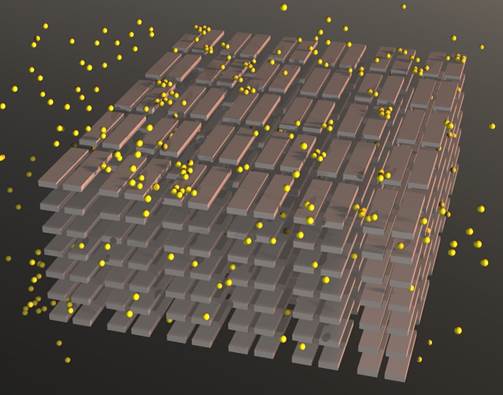CMT researches different approaches to annoplasmonic sensors of chemical or biological analytes. In the same context we also investigate the use of plasmonic metamaterials for sensors. The idea is to use metal-dielectric composites with characteristic dimensions much smaller than the operating wavelength as the sensor of refractive index change due to adsorption of a layer of targeted analyte. In 2007 we published in Journal of Optics a paper about the use of such nanostructures for chemical or biological sensors. Such sensors offer significant possibilities of improvement compared to the conventional sensors based on surface plasmons polaritons, like sensitivity and selectivity improvement and a wider choice of mechanisms for coupling with investigating beam for signal readout. We proposed the "CatalystPlus" concept, which actually represents a dual function structure, where the dielectric part of the metamaterial unit cell is at the same time a pore that increases the effective surface for adsorption.
We particularly investigated the integration of sensing element structures with composite membranes/nanomembranes aas separators, filters and preconcentrators for plasmonic sensors. At that, functionalization is achieved by nanoparticle fillers, by lamination and modifications of geometry. An important factor is the formation of nanopores in material with a goal to enlarge the effective area for adsorption. To this purpose we considered the use of novel materials like metalorganic frameworks, graphene as quasi-2D plasmonic material, etc. The final goal is to fabricate improved chemical and biological sensors aplicable in power industry, environmental protection and biomedicine.

